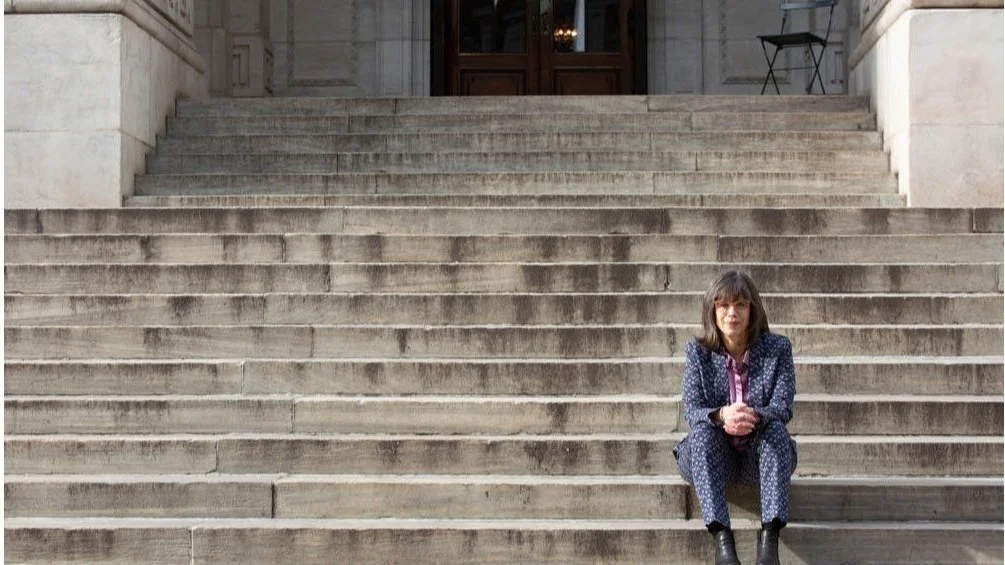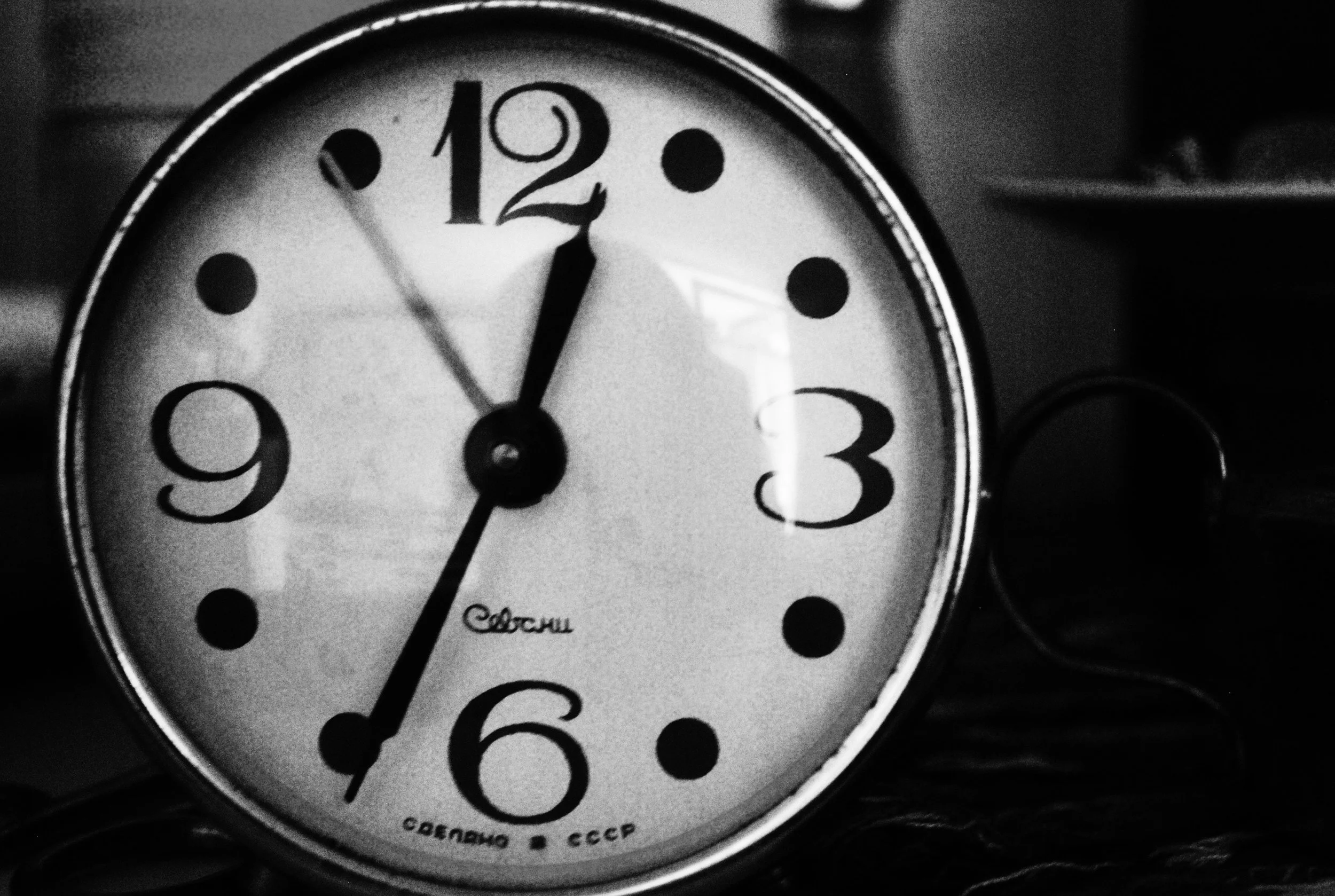For a diet to work, it has to be little changes, day by day. That's the way marketing works too.
Artist Myth #1: If I were a brilliant artist, I wouldn’t have to market
The Artist Statement that Opened Doors
When Carmen Mariscal contacted me from France last year about artist coaching she wanted help writing a grant application. Soon, we realized that before working on the application, she needed to revamp and write a new artist statement. That statement took months. The process included my interviewing her via Skype from her home in Paris, then she did several writing assignments, then I edited, then she re-wrote. It was like making a piece of art!
I kept noticing when we talked or when she answered my incessant questions in writing, all the stories Carmen had about her work. It felt right that her artist statement contain these stories especially the one about an accident she’d had that changed her life and a family heirloom given to her by her great grandmother. I also noticed that she made many different kinds of work where objects were “trapped” or “preserved.” The vitrines she refers to below are reminiscent of much of her work.
I was delighted to receive this email from Carmen last week about how the artist statement opened this door for her:
Thanks to the artist statement that I wrote with your wonderful coaching I got an interview at a Museum in Brussels. The space is perfect for my work and that is because before giving me the interview the curator learned about my car accident and my great grandmother's wedding dress. She had previously curated a Frida Kahlo exhibition and the museum where she works now is full of old objects in vitrines. Without the statement she would have never given me an interview and we are talking about the possibility of me doing site-specific work in the middle of the museum's collection!
I tell this story so that it helps you when you feel doubt about all the hard work that goes into writing a statement. At my lowest moments, I think to myself: Why am I doing this? Nobody’s ever gonna read it anyway.
Well, the truth is that people do read statements. And even just the writing of the statement strengthened Carmen’s sense of her work and gave her a clearer picture of how all the threads of her life and work weaved together.
Try this over the weekend: tell a life story that changed you as an artist or write about an object that holds great meaning for your work. These stories may inform your new, revamped statement.
Ignite the power in your calendar
Dress the Part
To prepare your artist talk: watch other performers
The first step in preparing a kick-ass artist talk is a passive one: watch other performers and make a list of what you like (and even don’t like) about what you see.
Notice how the street performer owns his corner of the sidewalk, notice how Jerry Seinfeld (and other comics) uses his body, attend other artist talks and make notes about you’d like to emulate. Maybe your list will include:
Maintained good eye contact
Showed captivating images
Opened with a funny and relevant story
Closed with a bang
Knew how to handle a Q&A session
Used a live demonstration
Learn more about how you can incorporate your favorite qualities into your next artist talk in this teleseminar.
Call forth your ARTIST
Lay out your clothes
Don't talk about it
I teach artists how to talk about their work. In fact, that’s what I’ll be teaching next Saturday for RACC. (The Artist Talk: How to talk to anyone, anywhere about your art.) But as much as I believe in the incredible value of articulating what you’re up to with your art, I know that sometimes, with a project in its nascent stage, it’s best to shut up.
Talking about a work that’s germinating (a stage which can last weeks, months or years) is often the best way to dispel its energy. You find that you’ve talked about it so much that you don’t need to release it on the canvas or on the page anymore.
Keeping it under wraps, known only to you and perhaps no one else, reserves its essential energy, energy which it needs as it grows into itself. This energy may even feel like a tension that you want to release by conversing about it. Don’t. Keep quiet and release it back into the project.
A few weeks ago, I had the good fortune to take a walk in the Pearl District with author David Shields before his reading at Powell’s.
“What are you working on?” he asked.
“A novel,” I said.
“What’s it about?”
Silence.
“I can’t tell you right now,” I said, a part of me wishing I could say something that would dazzle him. But I knew better.
“Wow. That must mean it’s going really well.”
“Yeah,” I said, smiled and didn’t say another word about it.
So, next time somebody asks: “What are you working on these days?” Bite your tongue. Especially about that germinating project. Talk about another project. Or tell them you’re working on something secret – they will be salivating to know more. That may be the fastest way to build an eager audience.
A rejection is just one "no"
We're the lucky ones
“What’s the point?” is how I was feeling this morning, still shell-shocked from news of two mass shootings this week. What’s the point of any of it? It seems a natural response to become quiet and still. Then, to want to retreat from a world that feels scary and chaotic. To just wait it out. Then I thought: We’re the lucky ones. Not only because we lived, but because we are the artists. We have our paint, our words, our lyrics, our leaps, our scripts, our instruments, our voices. And they are not petty things.
Nothing stopped us from making art. Not back then and not now. We had the spark and because of our birth or despite it or by chance or struggle we were lucky enough to make art and keep making it. In some cases, it saved some lives, including our own.
So, what do we do on the dawning of this next day? We may need to be quiet and still. But when that time comes to an end, may we pick up those brushes, that pen, open the laptop, turn the lights on in the rehearsal space, take that step. Because we are the lucky ones. We need to make art and the world needs to be saved by it.
Is it time to stop calling yourself "emerging"?
When good enough is good enough
A couple of months ago, I was looking through a file of old writing when I discovered a forgotten short story I’d written years ago and never sent out. I read the story, standing at the open file drawer, and when I was done, I thought: “This is good.” My second thought was: “I should send it to my writing group and see if they think it’s good. They could do another round of critiques on it and make it really, really good.”
Then, in a bold moment, I thought: “No. This story is good enough. If I tinker longer, I risk shoving it back in the drawer again for another hundred years.” I sent it out, defying the advice I often give about always enlisting help with your art-making and marketing.
That story, Say His Name, won an honorable mention in Glimmer Train’s Short Short Story competition and will be published in Issue 12, the next issue, of the literary magazine PoemMemoirStory.
Sometimes the best advice is best ignored. Sometimes your own opinion is all that matters. Sometimes taking action to send your work into the world is more important than years of tinkering something to a possible perfection which can also result in the death or slow smothering of a work.
What action can you take today in the direction of your artistic ambition without consulting anyone but your own knowing self?
Don't inoculate your ambition
“I inoculated myself against my literary ambition,” said author JJ Lee during a keynote at a writer’s conference I attended recently where he told the story of how he spent years avoiding the memoir he was both afraid of and destined to write. When he finally lost his job and had nothing else to do but write, he realized his ambition and wrote the acclaimed memoir The Measure of a Man.
His statement stuck with me for days. It made me wonder – how do artists and writers inoculate themselves against their own ambition when their ambitious projects scare them?
The word “inoculate” is so apt. It’s a word associated with protection from a disease. Perhaps this is one vaccine that hurts more than it helps. What would allow your ambition to wake up and write the book, paint the series, stage the performance that you are destined to create? Maybe what others consider a disease is for you the call to fulfill your ambition.
I think many artists inoculate themselves to some extent – after all, even successful artists tell me how scary a new project can be. Who wouldn’t be tempted to put ambition to sleep? What action can you take today to wake up your ambition and move your next project forward?
Devote your first hour to your art
Use your superpowers for good
Waiting to cross the street yesterday with my dachshund, I tried to make eye contact with the driver to make sure he saw me. But he wouldn’t look at me. So, I didn’t move. When I leaned in to find his eyes, he stared straight ahead, stone face. I sensed a big anger in him so I didn’t move but continued to watch him. Then, still refusing to look at me, he raised his hand in an impatient gesture that said to me “Come on, already, cross the street.” So I did, feeling the punch of his anger even though we hadn’t spoken and he never looked at me. Then as soon as my dog and I had cleared his path, he gunned his SUV and roared past. I was surprised that it took me half an hour to recover from his hostility. Then I thought: we, each of us, have so much power that we can use for good or bad. I thought of times when a stranger’s kind words had lifted my spirits for a day. I thought of the superpower we use every minute, every day, sometimes against ourselves and each other, sometimes for ourselves (and our art) and for each other. An old friend who I hadn’t seen in a 30 years wrote me recently after we had gotten together to say: “you used your superpowers for good.” I wasn’t even sure what he meant. But I appreciated this idea that we all have superpowers.
How can you use your superpower for good today? How can you harness it and make it work for your art rather than against it? How can you interact with just one other person today where your use your superpowers for good?
NEA's Writers' Corner
The hardest part of most grant applications is often the writer's or artist's "statement" about why you need the money or where you are in your career. My students often ask me how they can read other statements from successful applications. I just discovered this resource: The Writers' Corner on the National Endowment for the Arts website. This list shows past winners and their sample work including statements. Notice how straightforward those statements are. I will definitely peruse these before writing my next one!
Fundraising helps your artistic process
"Consider the pursuit of support and raising money as part of your artistic process. It is not a burden. It is a way of meeting people, building community and articulating ideas, concepts, and intentions… If you have an idea for a project by the time you’ve described it to forty people it will be a better idea." -- Anne Bogart, Theater Director, from her book and then, you act: making art in an unpredictable world.
Notice the presentations all around you
Standing in line at Trader Joe's the other day, I witnessed a young man return a bag of cashews. He did what all good presenters do: he established rapport, he told a relevant, concise story with humor, and then he used the bag as a prop to demonstrate the hole in it. Most of us make presentations every day in informal settings and we do fairly well. Then, for some reason, when we stand in front of an audience or speak at a meeting, we forget our good instincts.
The next time you present in an informal or formal setting, what can you emulate from cashew man? Some ideas:
-Build rapport with your audience before your talk begins. -Open with a concise, relevant, even funny story. -Use a prop or demo - it's guaranteed to be the most memorable moment of your talk. -End with a clear call to action. What do you want your audience to do or remember after they've walked out the door?
Until then, send me a story of a presentation you made or witnessed and how you used these skills. And keep noticing the presentations all around you!
Play the Numbers Game
I set a challenge for myself this year to send 50 submissions – about one a week – into the world in 2012. By submissions I mean grant applications or stories to literary magazines or contests or any kind of entry into a formal, public competition. Last Thursday, after sending out 20 submissions so far this year, I just received my 2nd acceptance. One of my stories, “Say His Name,” will be published in the next issue of poemmemoirstory.
What I’ve known all along but am now putting into practice is that the more I send “requests” into the world, the more I find acceptance. It’s such a simple formula, I’m astounded at my past resistance.
How could you play this numbers game in support of getting published, recognized, awarded or funded? To start, figure out how many submissions you’ve made in the past year or in the past six months. Set your sights on doubling it. If you sent out 10 applications last year, can you make it 20 this year?
This is the way you create your own luck. Not by waiting for it to knock on your door, but by inviting it, again and again.









